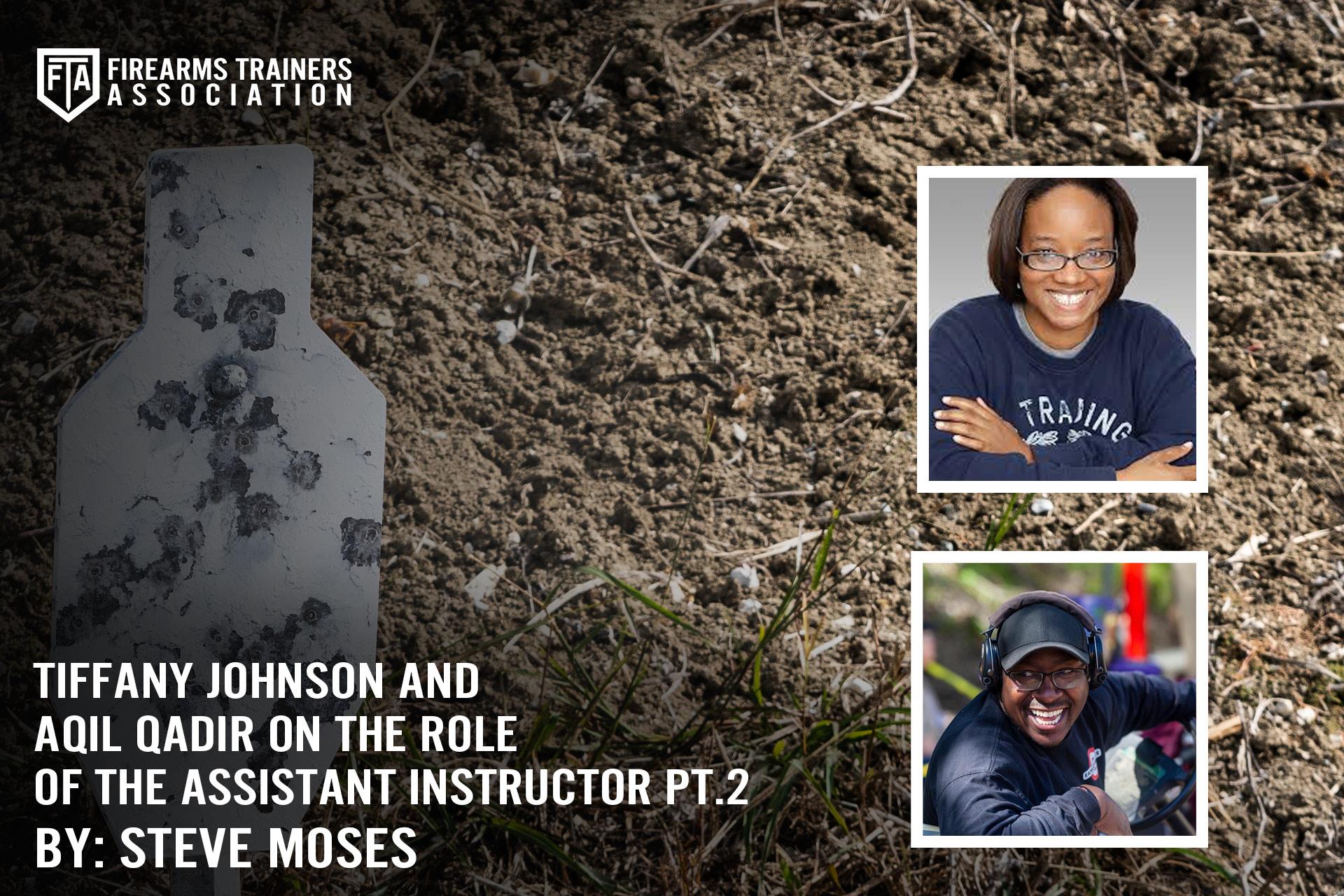
Posted on April 27, 2021 by Steve Moses in Training
Tiffany Johnson And Aqil Qadir On The Role Of The Assistant Instructor Pt. 2
TIFFANY JOHNSON AND AQIL QADIR ON THE ROLE OF THE ASSISTANT INSTRUCTOR PT. 2
Part one of the article TIFFANY JOHNSON AND AQIL QADIR ON THE ROLE OF THE ASSISTANT INSTRUCTOR discussed the importance of ensuring that a first-time student’s experience in a formal firearms class is positive, the definitions of the roles of Lead Instructor, Co-Instructor, Assistant Instructor, Range Safety Officer, and Coach and why no one person can occupy more than one of those roles at a time, the importance of avoiding cross-talking while class is in session, and two of the “Four C’s of Success,” which were Communication and Coverage.
Part two of this article will address the remaining two C’s of Success, the importance of greeting students upon arrival and taking immediate control over their firearms and gear, setting up workstations for each that enhance safety, and closing the class in a manner that takes into consideration that many of the students by this time are tired and possibly accident-prone.
Choreography: Tactical positioning of the instructor staff is important. At no time during a class should the Lead Instructor be forward of the Assistant Instructors (that is, the Co-Instructor, Range Safety Officers, or Coaches). By staying up-range, farther back, and mostly in the middle the Lead Instructor can observe the entire line, float as necessary, and his or her voice can be more easily heard by students on either end of the line. The Lead Instructor has an entire lane available to only him or her that provides unfettered access from one end of the lane to the other. The Assistant Instructors will position themselves between the Lead Instructor and the firing line. Each should take responsibility for half of the firing line and assume a position that allows them to lay hands on any student if necessary by taking no more than two steps. Good choreography is necessary to create a well-oiled machine with the goal being to not allow anything to happen unless the instructor staff wanted it to. In regard to classes that feature only a Lead Instructor and just one Assistant Instructor, the Lead Instructor can remain up-range and offset to the opposite side where the Assistant Instructor is positioned so that the entire line is in full view of the instructor staff at all times.
Content: Naturally, a great class is based upon a good lesson plan. A good plan includes managing students safely and in an organized fashion from the moment that they arrive at the range to the moment they depart. Both Tiffany and Aqil are supporters of greeting the students, walking them to the pre-arranged workstations on the firing line, and ensuring that all unbagging of firearms takes place at the firing line at which at no time is anyone permitted to go further downrange. They locate all left-handed shooters together on one side of the line and new students in the middle. They recommend having new shooters work off workstations in the form of tables (we use barrel tops during our Practical Carry Skills class) when possible. In order to ensure that all students are not still holding a handgun when the same should be holstered or bagged during the class they will ask the students to step back from the workstation and acknowledge that they are not still holding a handgun by showing their palms. Talk about attention to detail: they position the ammunition, magazines, and handgun on the table from left-to-right for right-handed shooters. Such minute attention to details goes a long ways towards not only impressing the students with the instructor staff’s organization but helps contribute to a much safer learning experience.
When it is time for the students to leave after bagging handguns under the eye of the Assistant Instructors, everyone leaves the firing line at the same time. Tiffany and Aqil’s motto is that as long as the instructor staff keeps their hands on the steering wheel everything tends to remain in control.
This article features major takeaways from Citizens Safety Academy instructors Tiffany Johnson and Aqil Qadir’s block of instruction titled “How to be an Effective Assistant Instructor” that I attended and does not address all of the excellent material that was presented. Even so, I thought many of the points that were included in this article had much value, and my team has already made some changes in the way it conducts classes as a result. The Citizens Safety Academy can be found at citizenssafety.com.